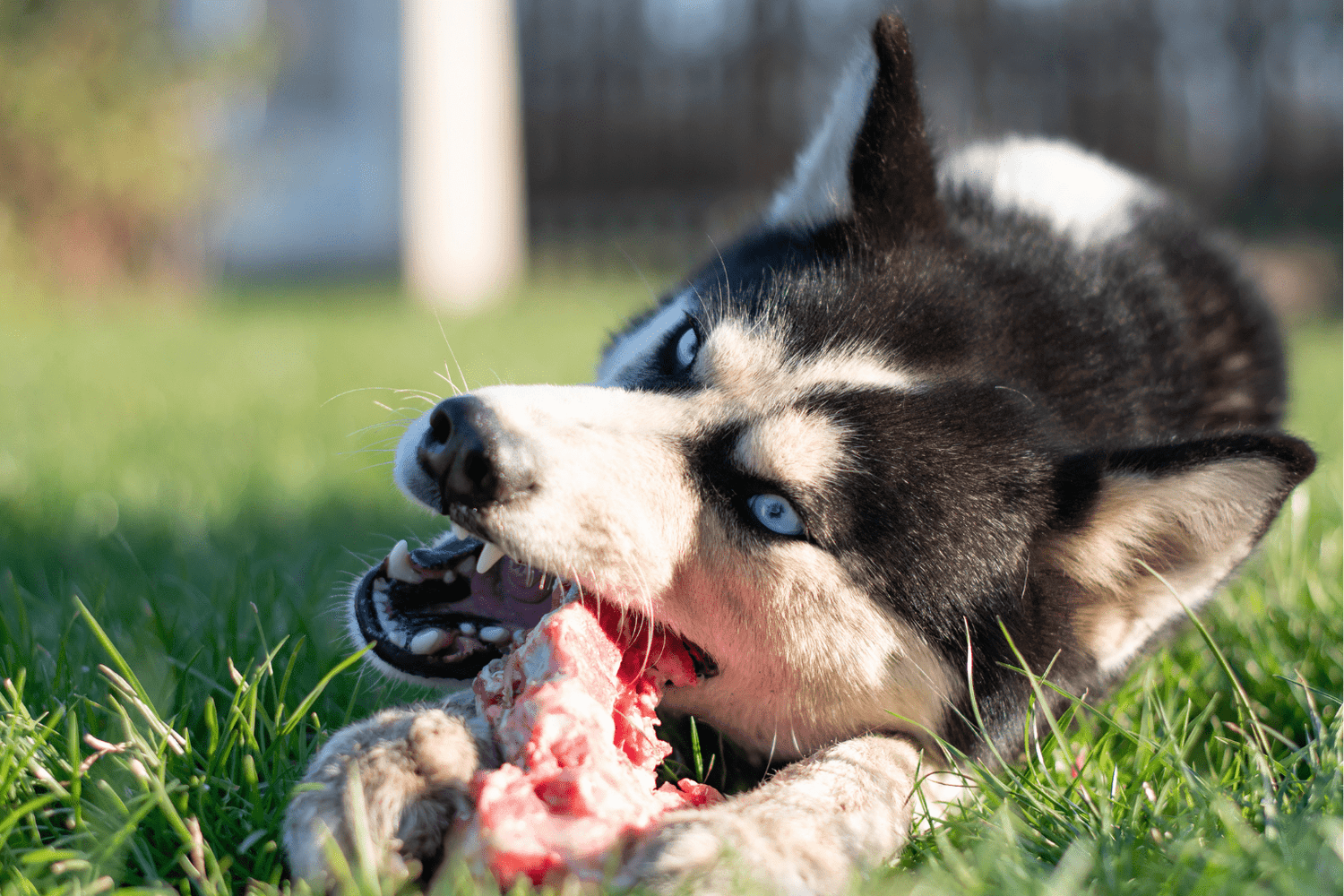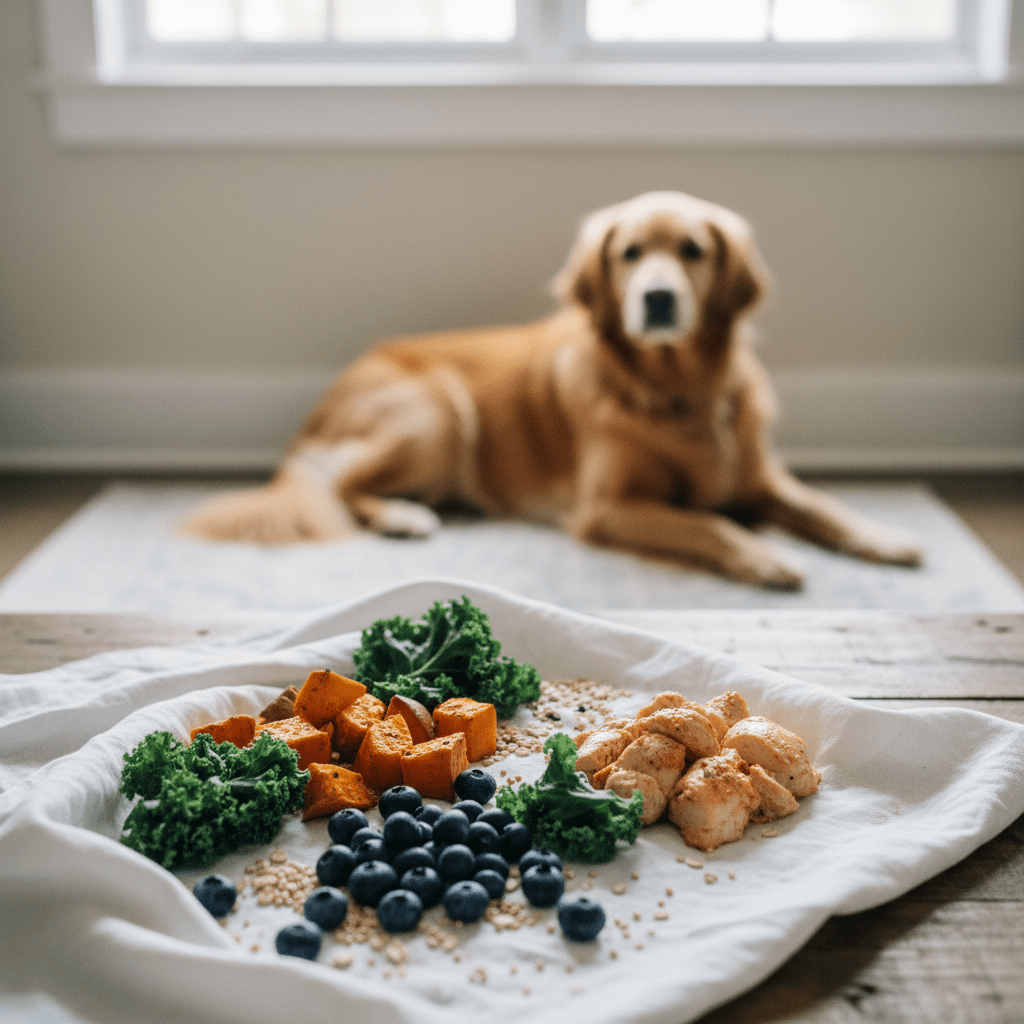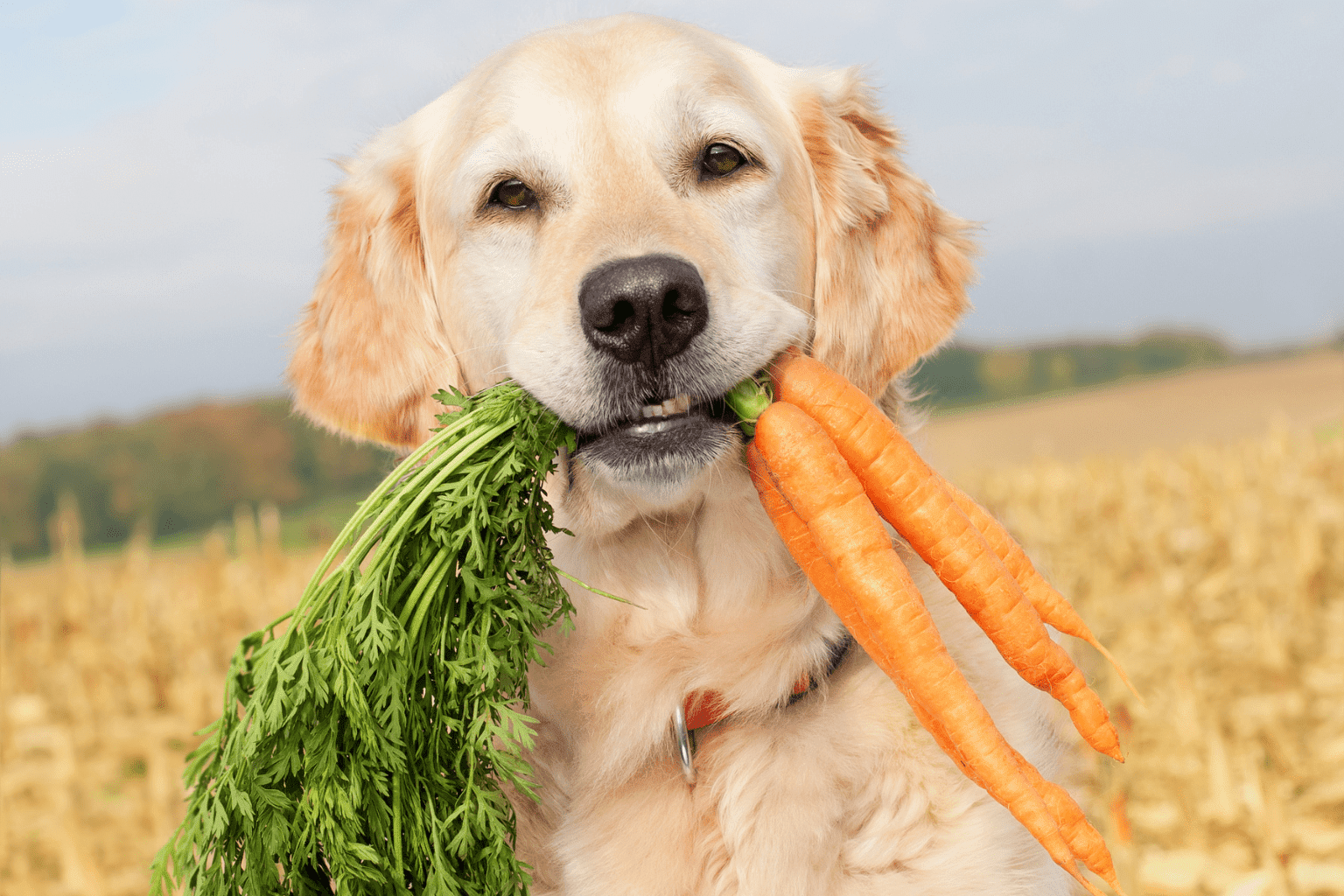Key Takeaways
- Wild dog food replicates the natural diet dogs have evolved to eat over thousands of years.
- It is high in protein and grain-free, supporting optimal pet health.
- Meat is the primary ingredient, providing essential amino acids and energy.
- Wild-inspired formulas avoid fillers commonly found in traditional kibble.
Table of Contents
- What Makes Wild Dog Food Special for Your Pet's Health
- Key Nutritional Advantages of Wild-Inspired Formulas
- How Wild Dog Food Supports Better Digestion
- Enhanced Energy Levels and Physical Performance
- Visible Improvements in Coat and Skin Health
- Natural Weight Management Through Proper Nutrition
- Making the Switch: Transition Guidelines and Expectations
- Common Questions About Wild Dog Food Safety and Suitability
- Complementing Wild Nutrition with Natural Health Support
- Long-Term Health Benefits and Preventive Care
- Optimizing Results Through Feeding Practices
- The Evolution of Canine Nutrition Understanding
What Makes Wild Dog Food Special for Your Pet's Health
Wild dog food mimics the natural diet that dogs evolved eating for thousands of years, high in protein, grain-free, and packed with nutrients that support optimal health. Unlike traditional kibble loaded with fillers, wild-inspired formulas focus on meat as the primary ingredient, delivering the amino acids and energy your dog's body craves.
For dogs with sensitive digestion or food allergies, choosing a dog allergy & immune support remedy alongside a wild-inspired diet can further enhance their overall well-being.
Owners looking to address issues like shedding, itchy skin, or a dull coat may benefit from adding a dog healthy skin & coat remedy to their pet's routine, complementing the benefits of wild dog food for visible improvements.
Key Nutritional Advantages of Wild-Inspired Formulas

High protein content stands as the cornerstone benefit of wild dog food. Real meat sources provide complete amino acid profiles that support muscle maintenance, immune function, and cellular repair. This protein density often reaches 32-38%, compared to conventional foods that may contain only 18-22%.
Grain-free formulations eliminate common allergens like wheat, corn, and soy that can trigger digestive upset in sensitive dogs. Instead, these foods incorporate sweet potatoes, peas, or other easily digestible carbohydrates that provide sustained energy without inflammatory responses.
Nutrient Density Difference: Wild dog food typically contains 2-3 times more bioavailable nutrients per cup compared to grain-heavy alternatives, meaning you often feed smaller portions while meeting all nutritional needs.
Natural fat sources from fish oils and meat provide essential omega fatty acids that promote healthy skin, lustrous coats, and cognitive function. These fats also enhance the absorption of fat-soluble vitamins A, D, E, and K.
How Wild Dog Food Supports Better Digestion
Dogs fed wild-inspired diets often experience improved digestive efficiency within 2-4 weeks of switching. The absence of hard-to-digest grains reduces intestinal inflammation, leading to firmer stools and less frequent bowel movements.
Prebiotics and probiotics naturally present in quality wild formulas support beneficial gut bacteria populations. This balanced microbiome enhances nutrient absorption while strengthening the immune system, since 70% of immune function originates in the digestive tract.
Many pet parents report reduced gas, bloating, and food sensitivities after transitioning to grain-free, meat-focused nutrition. The simpler ingredient lists make it easier to identify and eliminate potential allergens that may have been causing chronic digestive issues.
If your dog is experiencing digestive upset or you want to support gut health during the transition, consider the Dog De-Wormer Broad Spectrum for comprehensive digestive support.
Enhanced Energy Levels and Physical Performance
The high-quality protein in wild dog food provides sustained energy release throughout the day, eliminating the energy spikes and crashes associated with high-carbohydrate diets. Dogs often display increased playfulness and endurance during walks or exercise sessions.
Lean muscle development improves naturally with adequate protein intake, supporting joint health and mobility as dogs age. This becomes particularly important for active breeds or senior dogs maintaining their quality of life.
Expert Insight: Working dogs and highly active breeds often require 25-30% more calories when fed conventional foods, but wild-inspired formulas provide such concentrated nutrition that portion sizes typically decrease while energy levels increase.
Visible Improvements in Coat and Skin Health

Within 6-8 weeks of feeding wild dog food, most owners notice dramatic coat improvements, increased shine, reduced shedding, and softer texture. The omega-3 and omega-6 fatty acids from fish and meat sources nourish skin cells from within.
Dogs with chronic skin conditions like hot spots, excessive scratching, or dull coats often find relief through improved nutrition. The anti-inflammatory properties of quality fats help soothe irritated skin while supporting natural healing.
Reduced shedding means less cleanup around the house and fewer allergens for family members sensitive to pet dander. The stronger hair follicles produce healthier fur that stays attached longer and grows back more robustly.
For more tips on managing shedding and skin health, you may also find this article on best small dog food helpful, especially for owners of smaller breeds.
Natural Weight Management Through Proper Nutrition
The protein-rich composition of wild dog food naturally supports healthy weight maintenance by promoting lean muscle mass while satisfying hunger more effectively than carbohydrate-heavy alternatives. Dogs feel full longer on smaller portions.
Metabolic efficiency improves when dogs receive optimal nutrition ratios, helping overweight pets shed excess pounds while maintaining energy levels. The absence of empty calories from fillers means every bite contributes to nutritional goals.
| Nutrition Factor | Wild Dog Food | Conventional Kibble |
|---|---|---|
| Protein Content | 32-40% | 18-25% |
| Filler Ingredients | Minimal to none | High grain content |
| Portion Size Needed | Smaller portions | Larger portions |
For dogs struggling with weight loss, the higher satiety factor means less begging between meals and reduced tendency to overeat. Owners can gradually decrease portion sizes while maintaining nutritional completeness, creating sustainable weight loss without deprivation.
Making the Switch: Transition Guidelines and Expectations
Gradual transition over 7-10 days prevents digestive upset when switching to wild dog food. Start by mixing 25% new food with 75% current food for the first 2-3 days, then increase the ratio every few days until reaching 100% wild formula.
Some dogs may experience temporary loose stools during the first week as their digestive system adapts to higher protein levels and different fiber sources. This adjustment period typically resolves as beneficial gut bacteria populations establish themselves.
Timeline for Results: Most dogs show improved energy within 1-2 weeks, digestive improvements by week 3-4, and visible coat changes by weeks 6-8 of consistent feeding.
Monitor your dog's response during transition, increased water consumption is normal due to higher protein metabolism, while sustained enthusiasm for meals often indicates improved palatability compared to previous foods.
If your dog needs additional support during weight loss or has thyroid concerns, the Weight Loss & Thyroid Support can be a valuable addition to their wellness plan.
Common Questions About Wild Dog Food Safety and Suitability

Concerns about protein overload are largely unfounded for healthy dogs, as their kidneys efficiently process high-quality animal proteins. However, dogs with existing kidney disease should consult veterinarians before switching to protein-rich formulations.
Puppies and senior dogs often thrive on wild dog food due to increased nutrient density supporting growth and maintaining muscle mass respectively. The concentrated nutrition means smaller portions provide complete nutrition for dogs with decreased appetites.
Cost considerations balance out when factoring reduced feeding amounts and potential veterinary savings from improved health. Many owners find monthly food expenses remain similar while providing superior nutrition quality.
Veterinary Perspective: Dogs with food allergies often experience dramatic improvement on limited-ingredient wild formulas, as the simplified protein sources make identifying and avoiding triggers much easier than with complex grain-based foods.
To make informed choices about what to feed your dog, you may want to read this guide on brands of dog food to avoid for additional perspective.
Complementing Wild Nutrition with Natural Health Support
While wild dog food provides excellent foundational nutrition, some dogs benefit from additional natural support for specific health challenges. Digestive sensitivities, joint stiffness, or seasonal allergies may require targeted approaches alongside quality nutrition.
Natural remedies can work synergistically with improved diet to address underlying imbalances that food alone cannot resolve. Many pet parents find that combining species-appropriate nutrition with gentle, natural health support creates optimal wellness outcomes for their dogs.
For dogs experiencing digestive transitions, occasional loose stools, or food sensitivities, natural support options can ease the adjustment period while the body adapts to new nutrition. These approaches work with the body's natural healing processes rather than suppressing symptoms.
For a broader selection of holistic solutions, explore BestLife4Pets homeopathic pet supplements for natural health in dogs and cats to support your pet's unique needs.
Long-Term Health Benefits and Preventive Care
Dogs maintained on wild dog food for extended periods often demonstrate reduced incidence of common health issues associated with processed diets. Dental health frequently improves due to the natural chewing action required for kibble and reduced sugar content that feeds harmful oral bacteria.
The anti-inflammatory properties of omega-3 fatty acids from fish and game proteins can help maintain joint mobility as dogs age. Many senior dogs show renewed activity levels when switched from grain-heavy diets to protein-focused formulations that better support muscle maintenance.
Immune system function often strengthens over months of consistent wild nutrition, as the body receives steady supplies of bioavailable nutrients without inflammatory grain proteins. This translates to fewer seasonal allergies and improved resilience during stress or environmental challenges.
Research Insight: Dogs fed species-appropriate diets show 40% fewer digestive issues and 30% better weight management compared to those on grain-based formulations over 12-month periods.
For a scientific perspective on canine nutrition and health, see this external resource on the effects of diet on dog health.
Optimizing Results Through Feeding Practices

Meal timing plays a crucial role in maximizing wild dog food benefits. Two measured meals daily allow for better protein utilization and prevent the digestive stress of large single feedings that can overwhelm the system.
Fresh water availability becomes even more important with high-protein diets, as increased metabolic activity requires enhanced hydration. Many dogs naturally increase water consumption when transitioning to wild formulations.
Avoiding treats with artificial additives or grain fillers maintains the benefits of clean nutrition throughout the day. Simple protein-based treats or small portions of the same wild food work best for training rewards without disrupting digestive balance.
Feeding Strategy: Measure portions by weight rather than volume, as wild dog food's density means traditional cup measurements often lead to overfeeding and reduced cost-effectiveness.
For more insights on evaluating your dog's food, check out this complete dog food review to help you make the best choice for your pet.
The Evolution of Canine Nutrition Understanding
Growing research into canine gut microbiome reveals how wild dog food supports beneficial bacteria populations that processed grains cannot sustain. This emerging science validates what many pet parents observe, improved overall wellness extends beyond basic nutrition to fundamental digestive health.
Environmental sustainability concerns are driving increased interest in prey-model nutrition that mirrors natural food chains rather than resource-intensive grain agriculture. This alignment between pet health and ecological responsibility appeals to environmentally conscious pet parents.
As veterinary nutrition evolves beyond treating disease toward preventing it, wild dog food represents a proactive approach to maintaining health rather than managing symptoms. The focus shifts from addressing problems to creating optimal conditions for lifelong wellness.
The future of canine nutrition lies in understanding that our dogs' digestive systems remain fundamentally unchanged from their wild ancestors, making species-appropriate nutrition not just beneficial but essential for optimal health outcomes.
For further reading on the evolution of canine nutrition, refer to this external article on canine dietary evolution.
Frequently Asked Questions
What are the main nutritional benefits of feeding my dog wild-inspired food compared to traditional kibble?
Wild-inspired dog food is high in protein and grain-free, focusing on meat as the primary ingredient to provide essential amino acids and energy. It avoids fillers common in traditional kibble, offering a nutrient-dense formula that supports muscle maintenance, immune function, and overall vitality.
How does wild dog food improve digestion and reduce common digestive issues in dogs?
Wild dog food uses natural, minimally processed ingredients and eliminates common allergens like wheat, corn, and soy, which can upset sensitive stomachs. Its grain-free, easily digestible carbohydrates help support better digestion and reduce inflammation, promoting a comfortable digestive system for your dog.
Are wild dog food formulas suitable for dogs with allergies or sensitive stomachs?
Yes, wild dog food formulas are often a good choice for dogs with allergies or sensitive digestion because they avoid common allergens and fillers. Pairing a wild-inspired diet with natural health support remedies can further enhance your dog’s well-being and comfort.
What should I expect when transitioning my dog from conventional food to a wild-inspired diet?
When switching to wild dog food, expect a gradual transition over 7-10 days to help your dog’s digestive system adjust smoothly. You may notice improved energy, digestion, and coat health as your dog adapts to the nutrient-rich, grain-free formula.



